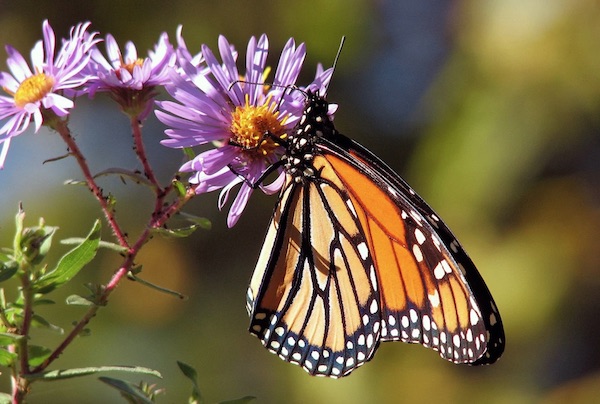Monarch butterfly count hits second lowest in 28 years
556 overwintering monarchs counted at Pismo State Beach this year
– The Xerces Society for Invertebrate Conservation, an international nonprofit dedicated to protecting wildlife through the conservation of invertebrates and their habitats, has released the results of the 28th annual Western Monarch Count. This year, the count reported a peak population of 9,119 monarch butterflies, marking the second-lowest overwintering population since tracking began in 1997.
Randy Widera, Director of Programs for the California State Parks Foundation, expressed concern over the findings:
“The western monarch butterfly is one of the most recognizable species in California, and we are greatly distressed by the results of this year’s Western Monarch Count,” said Widera. “California State Parks Foundation has worked hard to protect and conserve monarch groves in state parks. We will continue this work, but we also must see monarchs listed as a Threatened species under the Endangered Species Act.”
The Monarch Count findings align with an analysis by the California State Parks Foundation, which highlights the significant role state parks play in monarch conservation. Three of the top four overwintering sites for western monarchs are located in California state parks:
- Pismo State Beach (556 monarchs)
- Lighthouse Field State Beach (1,406 monarchs)
- Natural Bridges State Beach (1,400 monarchs)
As the largest single land manager of these groves, California State Parks plays a vital role in the species’ conservation.
Once, millions of western monarchs returned to coastal California each year, but the population has sharply declined in recent decades. Fewer than 2,000 butterflies were counted in California in 2020. Numerous factors, including climate change, habitat loss, pesticides, and disease, have contributed to this decline. However, the population had rebounded in recent years, with almost 233,000 butterflies counted in 2023-2024.
Listing the monarch butterfly as a Threatened species under the U.S. Endangered Species Act is crucial, as the latest Species Status Assessment predicts a greater than 95% chance of extinction for western monarchs by 2080. The proposed Threatened listing emphasizes the protection of overwintering groves—critical sites where monarchs return each year.
To add your name to the California State Parks Foundation petition supporting the listing of the western monarch butterfly as Threatened under the U.S. Endangered Species Act, visit: http://www.calparks.org/monarchthreat.












